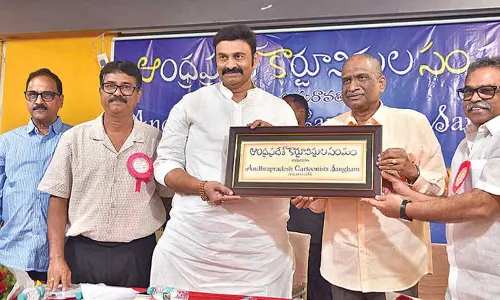Bhagavad Gita and its influence on Leadership

Bhagavad Gita And Its Influence On Leadership. Outstanding leaders go out of their way to boost the self-esteem of their personnel. If people believe in themselves, it\'s amazing what they can accomplish. “Sam Walton”
Outstanding leaders go out of their way to boost the self-esteem of their personnel. If people believe in themselves, it's amazing what they can accomplish. “Sam Walton”

The Bhagavad Gita tells us that, “At the beginning, mankind and the obligation of selfless service were created together.” These are the god Krishna’s words to the warrior Arjuna. He is describing the primary quality of a great leader. Not ego, not boastfulness or selfish desire, not even mere bravery, but selfless service. This is perhaps the earliest reference in the great spiritual classics to the servant leader.
The servant leader serves not himself, nor only his own kind. He serves the community, the environment, the planet, future generations, life itself. Ultimately, the servant leader serves “the gods”, all that is best in the human soul. Krishna tells us the active path of selfless service must be accompanied by the contemplative path of spiritual wisdom.
The focus is on “Leadership Lessons from Bhagavad-gita”.
What is leadership? There are many definitions of leadership that highlight its different aspects. John Maxwell, author of “The 21 Irrefutable Laws of Leadership” defines leadership as “influence, nothing more, nothing less”. He goes on to say: “He who thinks he leads but has no-one following him, is simply taking a walk.” This is a functional definition of leadership, one that basically says that a leader is someone who has followers.
Leadership has been described by leadership educator Todd Duncan as “a total commitment to purpose, accompanied by the determination to carry it out.” This is a characteristic definition that describes the personal qualities of a leader. Bhagavad-gita describes these fundamental universal principles – as the underlying framework of the universe that reflects the purpose of the universal architect. Leaders who align their practices with these principles will be effective leaders. Leaders who align their goals and the goals of the organizations they steward with these principles will be authentic leaders – leaders who are empowered to create a better world.
Leadership is absolutely crucial. As the oft-repeated saying has it: “everything rises or falls on leadership”. Failures or lack of leadership can be found near the root of all problems. At this present moment in time, with so many social and environmental indices tottering toward the red line, the world is crying out not just for effective leadership, but for authentic leadership. Bhagavad-gita contains the timeless principles that will empower leaders to be effective and authentic leaders. The greatest
need at this point in time is for those people who have been called to lead to step forward and take up the Service of Leadership.
There are four primary leadership roles as per the Bhagavad Gita :
1. Strategic Leadership
2. Directive Leadership
3. Team-building Leadership
4. Operational Leadership
1.Strategic Leader:
They have a unique character, with particular strengths .When you understand and play to your strengths you can develop your natural leadership ability, and you'll find that you are suited to a particular leadership role. Effective leadership necessitates a leadership team with the right mix of aptitudes.
One is too small a number for greatness, as the saying goes. Getting the right mix of people on the leadership team is crucial. Too many of one aptitude and there will be dysfunction of the organization or of the leadership team itself. Wrong mixes may manifest as a harmonious but ineffective leadership team, or a volatile leadership team characterized by internal strife. All of the four roles are necessary for a complete leadership team – in areas where one person is weak, another person is strong.
It is not ordinarily possible for one person to embody all types, and especially not to be good at all of them, because they have contradictory psychological characteristics. Such a personality is exceedingly rare. A person is generally strong in a primary leadership role, accompanied by a weaker predominant secondary role.
Very rarely will a person by strong in three. Wherever there are strengths there are corresponding weaknesses. These weaknesses can become strengths when they are acknowledged and understood, and a team is built around them. "Know Yourself", and your area of contribution, is the beginning of individual effectiveness, leading to team effectiveness.
The Traits of Strategic Leaders are as follows.
1. Analyst of reality
2. Create practical ways of converting vision into action
3. View emotions and sensitivity as detrimental to the cause
4. Do not hesitate to ask the hard questions
5. Do not mind creating controversy
6. Content to remain in the background
7. More loyal to the vision than to the people
8. Take great pride in being knowledgeable in their area of focus
The Directive Leader:
1. Casts a compelling vision
2. Does not spend time or energy in the details of the process
3. High motivational capacity
4. Effective speaker
5. Good listener
6. Make people feel important
7. Intuitive decision maker
8. Air of confidence
9. Makes tough calls
10.Seldom compromises
In the language of Stephen Covey, the Directive Leader is all about efficiency –getting people moving up the hill. The Strategic Leader is all about effectiveness,making sure that the team is moving up the right hill.
2. Directive Leadership :
The Directive Leader is about engagement – engaging himself or herself, and engaging others in the task at hand. The Visionary Leader is about detachment – stepping back and looking at the bigger picture. The two are generally complementary roles, and a person is generally better at one or the other.
The Strategic Leader enables the Directive Leader by providing him or her with strategic vision and direction. This is very valuable to the Directive leader as it ultimately makes him or her more effective.
In classical terms a Directive Leader is known as a ksatriya, and a Visionary Leader is known as a brahmana. Ksatriyas would act as Kings, and they would maintain an advisory staff of one or more brahmanas who would act as strategic input to their decision-making process.
The traits of Directive Leader are as follows:
1. Casts a compelling vision.
3. High motivational capacity.
4. Effective speaker.
5. Good listener.
6. Make people feel important.
7. Intuitive decision maker.
8. Air of confidence.
3.Team-building Leadership :
The Team Building Leader is all about people. They are natural people persons, and generate cohesion in any group that they are part of.
The traits of Team Building Leaders are as follows:
1. Enjoy organizing people around a common cause.
2. Rely heavily on their relational network.
3. Charismatic.
4. Generate high morale.
5. Place high value on people.
6. Ability to interact with a high variety of people.
7. Receives loyalty and respect from the team.
4. Operational Leader :
The Operational Leader is the final leadership role. This is a very practical, on-the ground leadership role.
The traits of Operational Leader :
1. Provide stability to the organization.
2. Devise systems to make things run smoothly.
3. They act as a hub through which people go in the organization.
4. Often reports bad news, but is seldom responsible.
5. Create new solutions to old problems.
6. Often complement the other three aptitudes.
Thus today’s manager should try to apply the above mentioned leadership theories, even though they are ancestral theories. They can play a proactive role in the organizations in achieving the desired organizational goals w.r.t having efficient leaders to lead the organizations effectively as aptly said Robin Sharma” Every master was once a beginner, Every pro started as an amateur, Every icon begin as an unknown”.
By NV Ravindra
Pl.Note: The above expressed views are absolutely personal views of the author.
The author is deputy manager HR at Clifton HR services Pvt Ltd




















